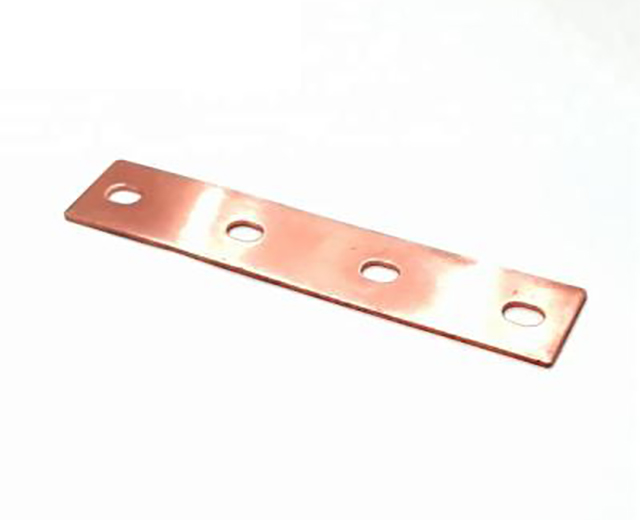

Copper Busbar ETP (Electrolytic Tough Pitch) is a high-conductivity copper alloy widely used in electrical applications due to its excellent electrical and thermal properties. ETP copper contains 99.90% minimum copper content, with small amounts of oxygen (0.02% to 0.04%) that enhance its mechanical properties without significantly affecting conductivity.

| Parameter | Value |
|---|---|
| Copper Purity | ≥ 99.90% (C11000 ETP Copper) |
| Oxygen Content | 0.02% – 0.04% |
| Electrical Conductivity | 100% IACS (International Annealed Copper Standard) at 20°C |
| Resistivity | 1.7241 µΩ·cm at 20°C |
| Thermal Conductivity | 385 W/m·K at 20°C |
| Tensile Strength (annealed) | 220 – 250 MPa |
| Tensile Strength (hard-drawn) | 300 – 360 MPa |
| Yield Strength (annealed) | 60 – 70 MPa |
| Yield Strength (hard-drawn) | 250 – 300 MPa |
| Elongation (annealed) | 45 – 50% |
| Elongation (hard-drawn) | 5 – 15% |
| Melting Point | 1083°C |
| Thermal Expansion Coefficient | 17.0 × 10⁻⁶ /°C (20-300°C) |
| Corrosion Resistance | Excellent (oxidation protective layer formed) |
Power distribution systems (substations, switchgear): currents 1000-6000 A
Industrial applications: motor control centers, welding equipment, electroplating
Renewable energy: solar farms, wind turbines, battery energy storage systems
Transportation: railway third rail systems, traction substations
Data centers: busbar trunking for power distribution units
Highest commercial electrical conductivity with low resistivity
Good mechanical strength, adjustable by annealing or hard-drawing
Excellent thermal conductivity for heat dissipation
Protective oxide layer for corrosion resistance
Stable operation under high current and temperature conditions
Choose appropriate busbar cross-section according to current rating
Consider thermal expansion and provide expansion joints
Select material hardness based on mechanical and forming needs
Apply surface plating (tin, silver) if corrosion resistance required
Specify fastening torque and hardware compatible with copper
Ensure surface roughness Ra between 1.6 and 3.2 μm for optimal contact
Use anti-oxidation coatings or electroless plating in corrosive environments
Maintain minimum bending radius of 2× thickness to avoid work hardening
Employ infrared thermography for periodic thermal inspection
Use corrosion-resistant fasteners to prevent galvanic corrosion
High-quality C11000 ETP copper with guaranteed purity and conductivity
Advanced manufacturing with tight dimensional and surface quality control
Comprehensive plating and finishing options for environmental resistance
Full testing services: conductivity, tensile, corrosion, thermal cycling
Customizable sizes and shapes to fit diverse industry needs
Experienced technical support from design to installation
Q1: What is the copper purity of ETP busbars?
A1: Typically ≥99.90%, with controlled oxygen content to enhance mechanical properties.
Q2: How does hard-drawn ETP copper differ from annealed?
A2: Hard-drawn ETP copper has higher tensile strength (up to 360 MPa) but lower elongation, suitable for applications requiring more mechanical strength.
Q3: What are typical applications of copper busbar ETP?
A3: Used in power distribution, industrial machinery, renewable energy, transportation, and data centers.
Q4: How to maintain ETP copper busbars?
A4: Regular cleaning, torque verification, corrosion prevention, and thermal monitoring are recommended.
Q5: What environmental protections are available?
A5: Tin, silver plating, and electroless nickel plating improve corrosion resistance, especially in marine or industrial atmospheres.